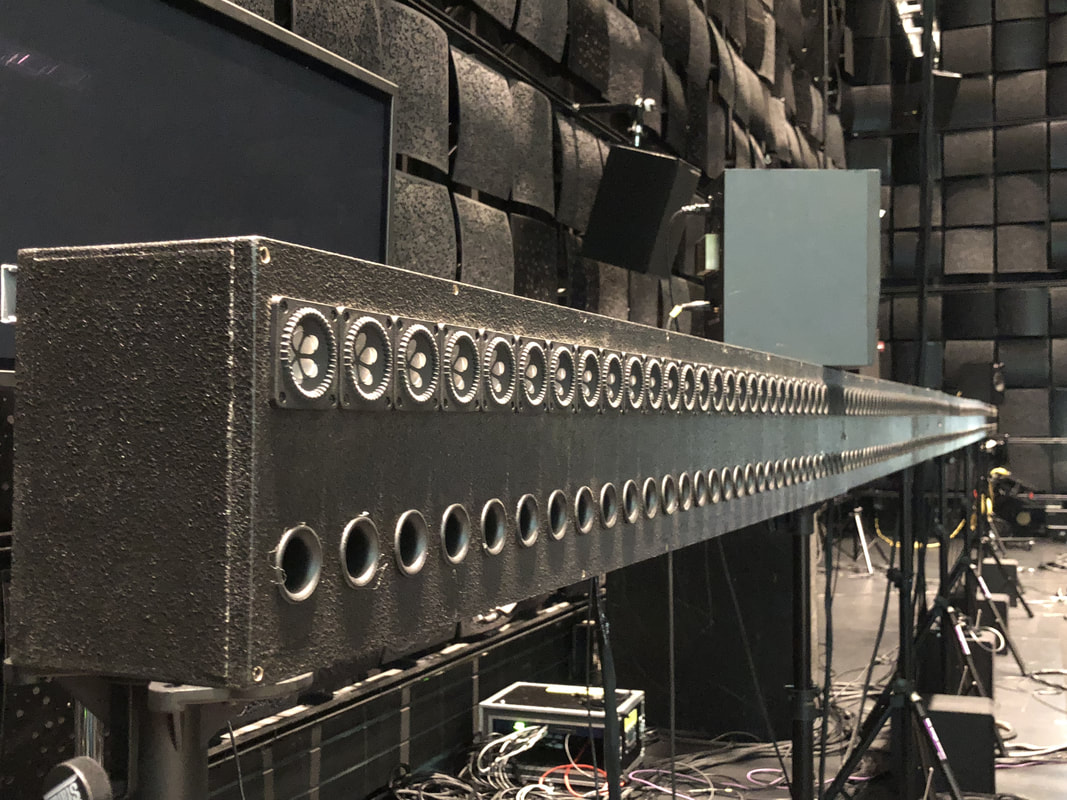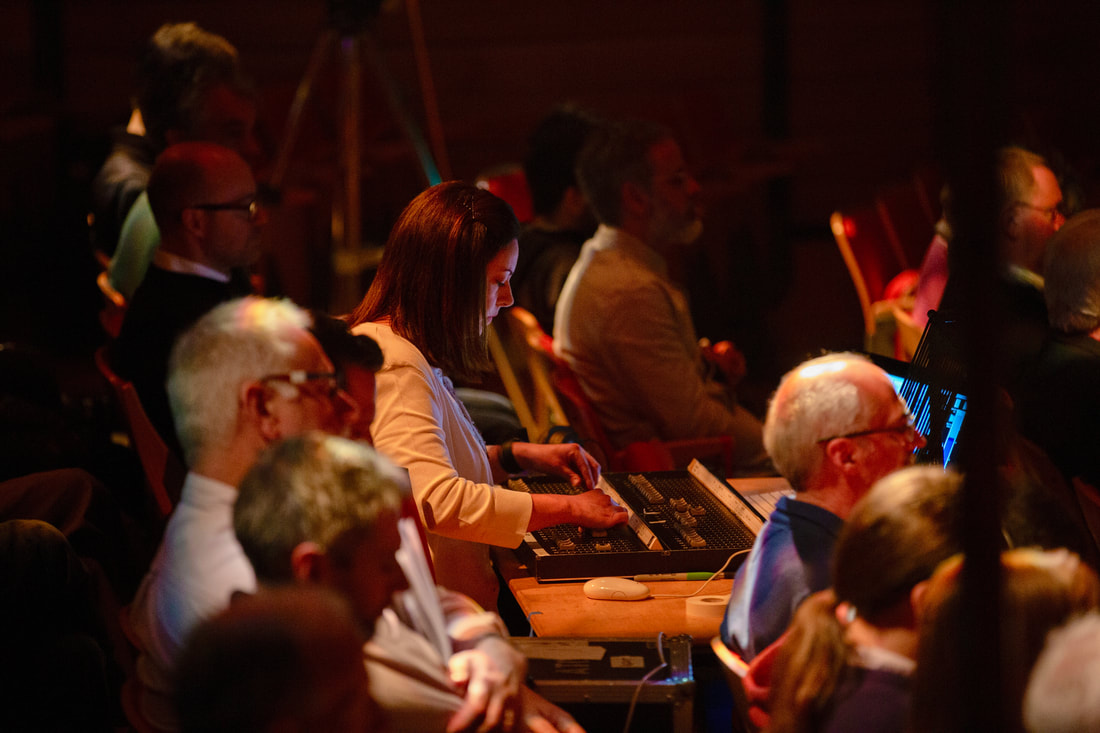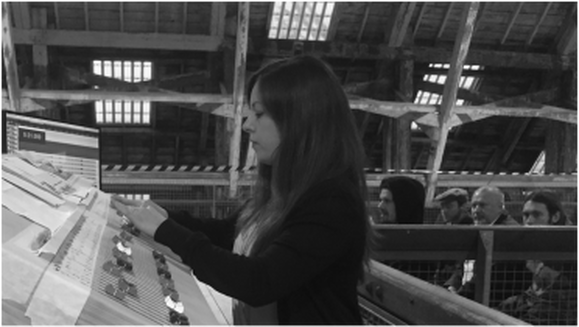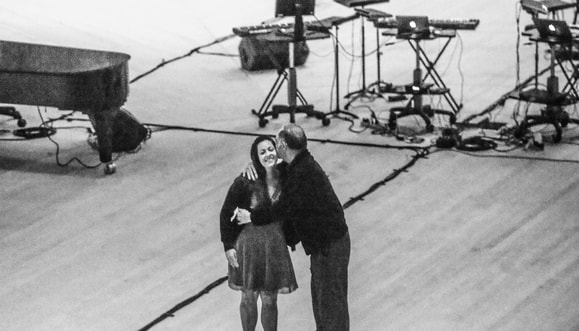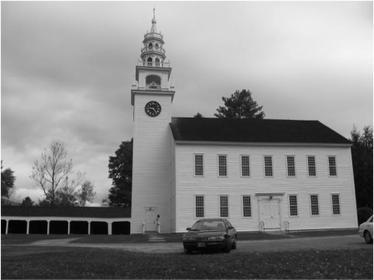Electro-acoustic Music Samples
Reverie |
Reverie is an acousmatic composition that leads the listener through an immersive fantasy centered around deconstructed music boxes. The work is comprised of eight sections that alternate between explorations of the music boxes’ gears and chimes. In the work, the music boxes’ sounds are pulled apart, exaggerated, expanded, and combined with other sounds whose timbres and textures are reminiscent of the original. As the piece unfolds, the timbres increase in spectral and textural density, and the associations become more and more fantastical. Gears are transformed into zippers, coins, chainsaws, motorcycles, and fireworks, and the chimes morph into rainstorms, all sizes of bells, pianos, and more.
Reid composed the work during residencies at the Ucross Foundation and the Virginia Center for the Creative Arts. The work is available in stereo and 8 channel versions.
Reverie won First Prize, 6th International “New Vision” Composition Competition “Galaxies” in memory of Nicolaus Copernicus, First Prize in Musicworks’ Electronic Music Competition, First Prize in the 8th KLANG! International Electroacoustic Composition Competition, Sound of the Year's Composed with Sound Award, and Second Prizes in both the Xenakis International Electronic Music Competition and the XIII° International Destellos Competition.
Comments from the Jurors: "A great inventive capacity is revealed, by treating divergent aspects of the sound objects and their context, suggesting new associations, which display a marked poetic discourse linked to illusion and fantasy, as a kind of sound poetry."
Reverie is an acousmatic composition that leads the listener through an immersive fantasy centered around deconstructed music boxes. The work is comprised of eight sections that alternate between explorations of the music boxes’ gears and chimes. In the work, the music boxes’ sounds are pulled apart, exaggerated, expanded, and combined with other sounds whose timbres and textures are reminiscent of the original. As the piece unfolds, the timbres increase in spectral and textural density, and the associations become more and more fantastical. Gears are transformed into zippers, coins, chainsaws, motorcycles, and fireworks, and the chimes morph into rainstorms, all sizes of bells, pianos, and more.
Reid composed the work during residencies at the Ucross Foundation and the Virginia Center for the Creative Arts. The work is available in stereo and 8 channel versions.
Reverie won First Prize, 6th International “New Vision” Composition Competition “Galaxies” in memory of Nicolaus Copernicus, First Prize in Musicworks’ Electronic Music Competition, First Prize in the 8th KLANG! International Electroacoustic Composition Competition, Sound of the Year's Composed with Sound Award, and Second Prizes in both the Xenakis International Electronic Music Competition and the XIII° International Destellos Competition.
Comments from the Jurors: "A great inventive capacity is revealed, by treating divergent aspects of the sound objects and their context, suggesting new associations, which display a marked poetic discourse linked to illusion and fantasy, as a kind of sound poetry."
Jouer
Jouer is an immersive composition for amplified soprano saxophone and electronics that explores sounds associated with “play”—sports, balls bouncing or being hit, playground and amusement park sounds, sounds of various children’s toys, balloons, video games, swimming pool games, trampolines, casinos, racetrack sounds, and much more. The electronics lead the listener through various soundscapes associated with the theme, while the saxophone part interacts with the evolving timbres and unifies the various sound worlds.
Reid composed the piece at Yaddo and MacDowell as part of her Guggenheim Fellowship. The piece was composed for Kyle Hutchins and the Cube at Virginia Tech.
Reid composed the piece at Yaddo and MacDowell as part of her Guggenheim Fellowship. The piece was composed for Kyle Hutchins and the Cube at Virginia Tech.
Sk(etch)
|
Sk(etch) is an acousmatic work that explores sounds, gestures, textures, and timbres associated with the creative process of sketching, drawing, writing, and composing.
The work was composed with two projects in mind: working with EMPAC’s wave field synthesis array and for Núcleo Música Nova’s «microFOLIA» project. The work won First Prize in the Tesselat Electronic Music Competition and an Honorary Mention in the WOCMAT NCTU International Phil Winsor Computer Music Competition. Sk(etch) is featured on RMN Classical's Electroacoustic & Beyond vol. 4, Music from SEAMUS CD vol. 29, and Núcleo Música Nova’s microFOLIA. |
Ring, Resonate, Resound
|
Ring, Resonate, Resound is an acousmatic composition written in homage to John Chowning. The piece tips its hat to Chowning’s Stria, Turenas, and the beautiful sonic landscape Chowning explored through his research and discovery of FM synthesis. Ring, Resonate, Resound is dedicated to him.
The piece was composed using a multidimensional compositional timbre model Reid developed while at Stanford University. The composition explores timbre through dozens of bell sounds, which provide the harmonic and timbral material, structure, foreground, and background for the piece. The composition is comprised of five sections, each examining a different set of bells and materials that interact with them. The piece begins thin and bright, then gradually increases in spectral and textural density until the listener is enveloped by a thick sound mass of ringing bells. The bells gently fade into waves of rich harmonic resonances. Ring, Resonate, Resound was premiered at Stanford University’s Triple CCRMAlite: 40, 50, 80 celebration in October of 2014. The piece won the Film Composition Award in Frame Dance Production’s 2015 Music Composition competition, and is featured on Ablaze Records' Electronic Masters Vol. 4 disc. |
|
Crumbs
|
Crumbs, for amplified percussion and electronics, is an aphoristic composition that explores delicate grains, sounds, and textures. The work was designed to be portable. The instruments and found objects used in the live-percussion part can easily fit inside a small box.
The work is comprised of six short sections, each examining a unique set of small handheld percussion instruments and common household items. The work is centered around a 5:1 ratio, which controls the piece’s proportions and the distribution of the number of attacks per section. Each of the first five sections are composed of two gestures: 1 decelerating and 1 accelerating. Their weighted proportions gradually shift from a 5:1 to a 1:5 ratio. The 6th section is divided into 5 additional parts that mirror the largescale proportions in the piece. The work begins with small, bright, effervescent grains, and gradually incorporates larger, deeper, and more resonant textures. The work is featured on the Society of Composers (SCI) and SEAMUS Interactions CDs. |
|
Fall, Leaves, Fall
|
Fall, Leaves, Fall, for amplified saxophone and electronics, is an aphoristic composition that explores the seasons shifting from autumn to winter, decay, and poetry by Emily Brontë. The work was composed at the Hambidge Center.
Fall, Leaves, Fall by Emily Brontë Fall, leaves, fall; die, flowers, away; Lengthen night and shorten day; Every leaf speaks bliss to me Fluttering from the autumn tree. I shall smile when wreaths of snow Blossom where the rose should grow; I shall sing when night's decay Ushers in a drearier day. |
|
Sparrow (Spero)
|
Sparrow (Spero) is piece for flute, horn, percussion, piano, violin, and 7.1 channel live-electronics. The material for the piece was derived from recordings of a bell that is housed in a meeting house in the composer's hometown of Jaffrey, NH. Similar to many New England towns, this bell sounds every hour. While it is one of the sounds of Reid's childhood, the bell’s location and history are also important. It is housed in a meeting house that was erected on June 17, 1775 during the battle of Bunker Hill. Tradition tells us that the workers could hear the sounds of cannon fire from Charlestown. The bell tower was added in 1822 and the bell was cast by the Paul Revere Foundry (Stephenson & Seiberling, 1994). The form for Sparrow (Spero) is based on the structure of this bell sound and explores both interactive electronics and the concept of using timbre as a structuring device. Sparrow (Spero) received an Honorary Mention in the International Alliance for Women in Music’s Pauline Oliveros Award in 2010. |
Pressure
|
Pressure, for viola and live-electronics, is a single movement work that explores the timbral possibilities of the instrument from scroll to tailpiece. The composition contrasts delicate gestures, melodies, and squeaks, with dense sweeping textures, flurries of tapping, and waterfalls of glissandi harmonics. The word ‘pressure’ has multiple different meanings, two of which particularly exemplify this work: to push toward a definitive end, and the exertion of force upon an object. Through various extended techniques, including unusual finger and bow placements, tapping, and extreme bow pressure, the physical force on the viola can be seen as well as heard. The electronics for Pressure are realized with Max/MSP. In the piece, the soloist’s sounds are amplified, processed, and spatialized using predetermined trajectories. The live sound is combined with the synchronized playback of prepared sound files. The resulting textures surround and immerse the listener in a vibrant soundscape. The electronics color, transform, and expand the possibilities of the solo instrument, allowing a pizzicato to have a gong-like resonance one moment and a heavy metal electric guitar timbre the next; or enabling a monophonic gesture to be multiplied a hundred fold into a thunderous orchestral buzzing. Pressure was composed for violist Drew Ricciardi at McGill University in Montreal, QC in 2007. The work received the International Alliance for Women in Music’s (IAWM) Pauline Oliveros Prize in 2008, and is featured on Ablaze Records' Electronic Masters Vol. 5 disc. |
|
